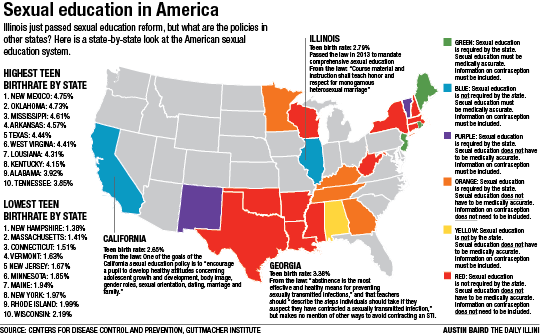
Teen Pregnancy in Illinois: A Comprehensive Analysis
Introduction
Teen pregnancy remains a significant public health concern in Illinois, with far-reaching consequences for both the young mothers and their children. This article provides a comprehensive analysis of teen pregnancy in the state, examining its prevalence, contributing factors, and the impact it has on individuals and society as a whole.
Prevalence of Teen Pregnancy
According to the Illinois Department of Public Health (IDPH), the teen birth rate in Illinois has declined in recent years, but it remains higher than the national average. In 2020, the teen birth rate in Illinois was 21.2 births per 1,000 females aged 15-19, compared to the national rate of 17.4.
The teen birth rate varies significantly by race and ethnicity. In 2020, the teen birth rate among Black females in Illinois was 42.2 per 1,000, compared to 16.5 per 1,000 among White females and 23.2 per 1,000 among Hispanic females.
Contributing Factors
Numerous factors contribute to teen pregnancy, including:
- Poverty and socioeconomic disadvantage: Teenagers living in poverty are more likely to experience unplanned pregnancies due to limited access to healthcare, education, and resources.
- Lack of access to comprehensive sex education: Comprehensive sex education programs provide teens with the knowledge and skills they need to make informed decisions about their sexual health.
- Peer pressure and social norms: Teenagers who are surrounded by peers who engage in risky sexual behaviors are more likely to do so themselves.
- Trauma and abuse: Teenagers who have experienced trauma or abuse are at increased risk for teen pregnancy.
Impact of Teen Pregnancy
Teen pregnancy has a profound impact on both the young mothers and their children.
For Young Mothers:
- Educational attainment: Teen mothers are less likely to complete high school and pursue higher education.
- Economic stability: Teen mothers face significant economic challenges, as they are more likely to be unemployed or underemployed.
- Health risks: Teen mothers are at increased risk for pregnancy-related complications, such as preeclampsia and premature birth.
- Mental health issues: Teen mothers are more likely to experience depression, anxiety, and other mental health challenges.
For Children of Teen Mothers:
- Health outcomes: Children of teen mothers are more likely to have low birth weight, developmental delays, and chronic health conditions.
- Educational attainment: Children of teen mothers are less likely to succeed academically and complete high school.
- Economic mobility: Children of teen mothers are more likely to grow up in poverty and experience economic hardship.
Prevention and Intervention
Addressing teen pregnancy requires a multifaceted approach that includes:
- Expanding access to comprehensive sex education: All teenagers should have access to comprehensive sex education programs that provide accurate information about contraception, sexually transmitted infections (STIs), and healthy relationships.
- Reducing poverty and socioeconomic disadvantage: Addressing the root causes of poverty, such as lack of affordable housing, job opportunities, and healthcare, can help reduce the risk of teen pregnancy.
- Providing support for teen parents: Teen parents need access to support services, such as case management, counseling, and job training, to help them overcome the challenges they face.
- Empowering youth: Empowering youth with knowledge, skills, and resources can help them make informed decisions about their sexual health and avoid unplanned pregnancies.
Conclusion
Teen pregnancy remains a significant public health concern in Illinois, with far-reaching consequences for both the young mothers and their children. Addressing teen pregnancy requires a comprehensive approach that includes prevention, intervention, and support. By investing in comprehensive sex education, reducing poverty, providing support for teen parents, and empowering youth, we can create a future where all young people have the opportunity to reach their full potential.